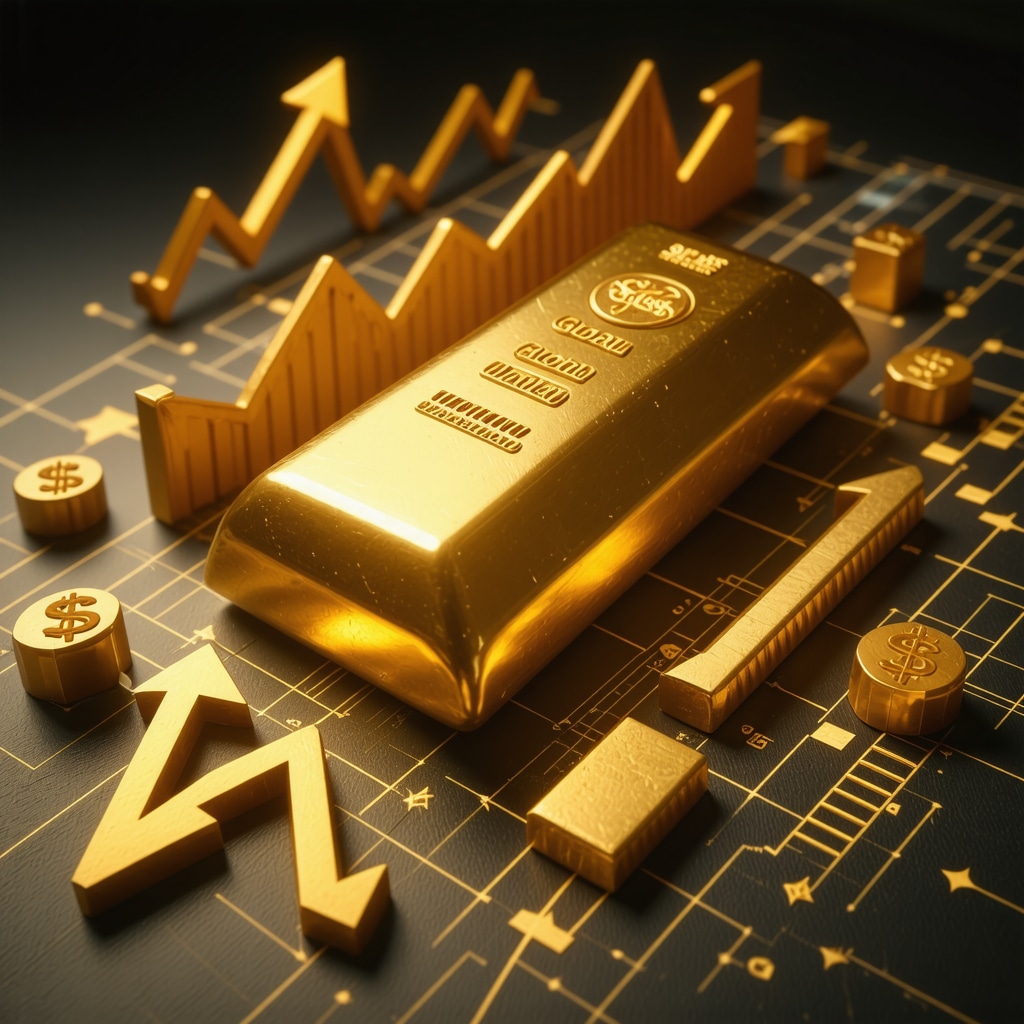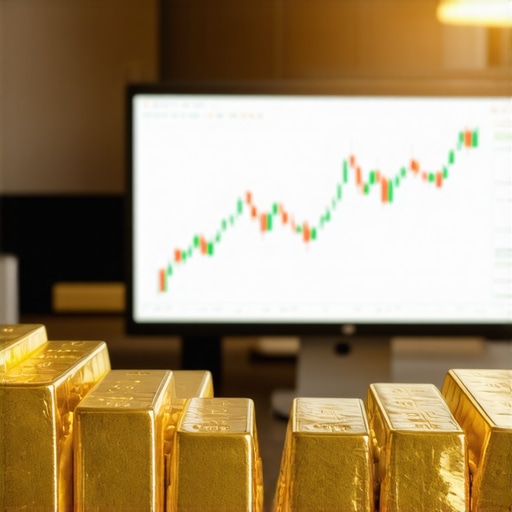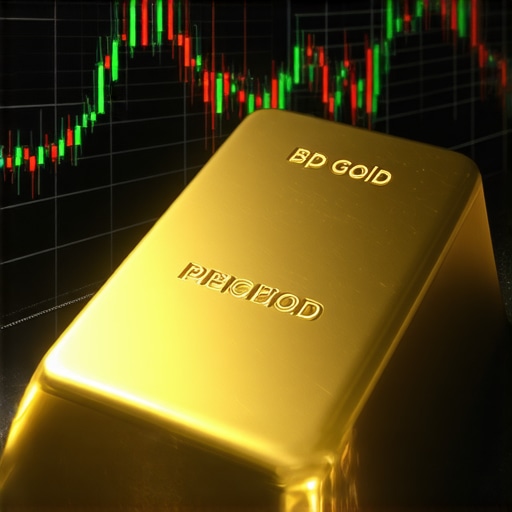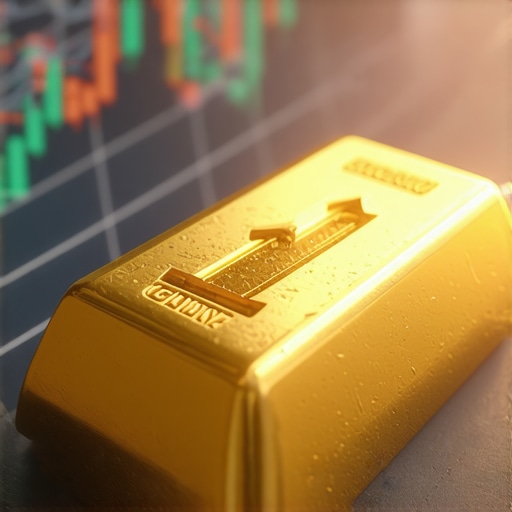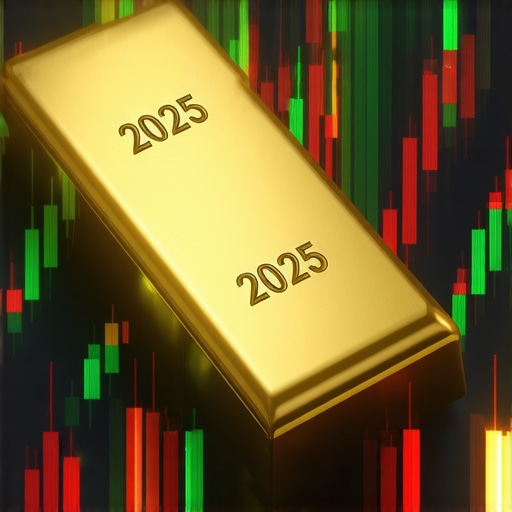Gold in the Crystal Ball: Will 2025 Shine Bright or Dim?
As the world spins faster and economic uncertainties multiply, the allure of gold remains as potent as ever. Remember that time during the 2008 financial crisis when gold suddenly became everyone’s best friend? Well, history seems poised to repeat itself, but with a few twists. So, what does 2025 hold for gold prices? Buckle up, because we’re diving into the glittering world of supply, demand, and the economic drivers shaping gold’s destiny.
Supply Side Secrets: Is Gold Running Out of Puff?
Gold supply is like that mysterious cousin who always shows up unexpectedly—sometimes plentiful, sometimes scarce. Major gold-producing countries like China and Australia continue to churn out bullion, but mining disruptions—think labor strikes or environmental regulations—can tighten the supply chain. Interestingly, central banks around the world have been net buyers lately, adding to the stockpile and potentially propelling prices upward. For a detailed look at how supply shortages impact prices, check out this comprehensive guide to gold supply dynamics.
Demand Dynamics: Who’s Still Obsessed with Gold?
Demand for gold isn’t just about jewelry and adornment anymore; it’s a strategic asset in the global economy. Central banks, hedge funds, and savvy investors are hoarding gold as a hedge against inflation and market volatility. The tech industry’s insatiable appetite for gold in electronics also keeps demand ticking. But here’s the kicker: if inflation surges—say, due to reckless monetary policies—gold’s role as a safe haven becomes even more prominent. Curious about how demand in industries like jewelry and tech impacts prices? Dive into this insightful analysis.
What’s the Economic Weather Forecast for Gold?
Economies are like weather patterns—sometimes stormy, sometimes sunny. With inflation creeping up in various countries, gold’s reputation as a hedge is getting a serious workout. Additionally, central bank policies—whether they’re printing more money or tightening monetary screws—can send gold on a rollercoaster ride. Will 2025 see gold prices stabilize or skyrocket? The answer hinges on these interconnected factors. For a deeper understanding, explore this latest forecast report.
Is Gold Still the Golden Ticket in 2025?
Absolutely, if you ask seasoned investors. Gold’s timeless appeal lies in its resilience amid chaos. But sitting back and hoping for a windfall isn’t enough. Smart investors keep an eye on supply chains, demand trends, and macroeconomic signals. Want a step-by-step guide to getting started in gold investments? Check out this beginner’s guide to buying gold. And don’t forget, diversifying your portfolio with gold can be a game-changer—more on that later.
What are your predictions for gold’s trajectory in 2025? Share your thoughts in the comments below, and let’s keep the conversation shining as brightly as the precious metal itself!
Unveiling the Hidden Forces That Could Shape Gold’s Price in 2025
While many focus on supply and demand, the real game-changer for gold’s trajectory might lie beneath the surface—namely, geopolitical tensions and technological innovations. These factors could subtly influence market sentiment and investment flows, often in ways that are not immediately obvious. For instance, escalating geopolitical conflicts tend to drive investors toward safe-haven assets like gold, potentially pushing prices higher. Conversely, breakthroughs in digital currencies and blockchain technology could redefine how investors view and utilize gold, possibly reducing its traditional role in portfolio diversification.
How Do Geopolitical Risks and Technological Shifts Interact to Impact Gold?
Geopolitical risks—such as trade wars, territorial disputes, or regional conflicts—often serve as catalysts for increased gold demand. During such times, investors seek stability, and gold historically benefits from these uncertainties. A notable example was during the 2010s when tensions in the Middle East and Asia prompted gold prices to soar. On the other hand, technological advancements—particularly in blockchain and digital assets—are reshaping investment landscapes. Digital gold tokens or blockchain-backed assets might emerge as competitors or complements to physical gold, affecting demand dynamics. According to a recent report by the IMF, these innovations could influence investor preferences and market liquidity in unpredictable ways.
Could Innovations in Digital Asset Technology Make Gold Obsolete—or Reinvent Its Value?
This question is at the heart of many experts’ debates. Some argue that as digital currencies gain prominence, the traditional allure of gold might diminish. Others believe that gold’s intrinsic qualities—its scarcity, durability, and historical significance—will ensure its relevance for decades to come. The key lies in understanding how digital assets and blockchain technology could either challenge or enhance gold’s role as a hedge. For investors, staying informed about emerging trends through trusted sources like the ultimate guide to gold mutual funds can provide valuable insights into adapting strategies accordingly.
Do you think technological advancements will redefine gold’s place in the global economy? Share your perspective in the comments or suggest more reading on how innovation impacts precious metals investments. Remember, understanding these nuanced factors can help you craft a resilient portfolio that adapts to an ever-changing landscape.
Deciphering the Digital Gold Revolution: Will Blockchain Make Physical Gold Obsolete?
As technological innovation accelerates, the finance world is witnessing a paradigm shift—digital gold tokens and blockchain-backed assets are challenging traditional perceptions of gold as a safe haven. Experts debate whether these digital derivatives will complement or replace physical bullion in diversified portfolios. According to a 2023 report by the IMF, the integration of digital assets into mainstream investment strategies is poised to redefine asset allocation models.
Digital gold offers advantages like liquidity, ease of transfer, and transparency, but it also raises concerns about security and regulatory oversight. Investors need to understand the nuances—such as the underlying blockchain technology, custodial risks, and market liquidity—before reallocating resources from physical gold. With the rise of decentralized finance (DeFi), new avenues for gold investment are emerging, promising greater flexibility but also increased complexity.
How Can Investors Leverage the Synergy Between Digital and Physical Gold?
Smart investors are exploring hybrid strategies—holding both physical gold for its intrinsic value and digital gold for liquidity and convenience. This approach demands a nuanced understanding of market dynamics, regulatory environments, and technological trends. For instance, integrating digital gold into a traditional portfolio can enhance diversification and resilience during geopolitical upheavals or economic downturns.
To navigate this evolving landscape, staying informed through authoritative sources such as the ultimate guide to gold mutual funds is essential. Regularly assessing market developments and technological innovations can empower investors to adapt strategies proactively, ensuring their portfolios remain robust amid rapid change.
Unraveling the Impact of Geopolitics and Technology on Gold’s Future Trajectory
While supply and demand are the core determinants of gold prices, external shocks like geopolitical tensions and technological breakthroughs often serve as catalysts for price volatility. Historical episodes, such as the surge in gold prices during the Middle East conflicts in the 2010s, exemplify this phenomenon. Currently, escalating trade disputes and regional conflicts continue to drive safe-haven demand, making geopolitical risk a critical factor for 2025 forecasts.
Simultaneously, innovations in blockchain and digital currencies could either diminish gold’s traditional role or reinvent its value proposition. For example, central bank digital currencies (CBDCs) and blockchain-secured assets are creating new investment paradigms that blend physical and digital assets. This interplay raises the question: Could these technological shifts eventually render gold obsolete, or will they serve to reinforce its strategic importance?
What Are the Strategic Implications for Gold Investors Amid These Transformations?
Investors must adopt a forward-looking mindset, integrating geopolitical risk analysis with technological trend assessments. Diversification remains paramount—balancing physical gold, digital assets, and other safe-haven instruments can mitigate volatility. Moreover, actively monitoring policy developments, such as central bank digital currency initiatives and international regulatory frameworks, will be crucial in formulating resilient investment strategies.
For those eager to deepen their understanding, engaging with specialized financial advisories and industry reports can provide an edge. As the landscape evolves, so must your approach—embrace innovation, scrutinize geopolitical signals, and refine your portfolio to harness the full potential of gold in 2025 and beyond. Want to explore more on how to adapt your investment strategy? Dive into our comprehensive resources and expert analyses today.
Decoding the Role of Central Banks and Strategic Reserves in 2025
One of the most underappreciated yet influential factors shaping gold’s trajectory is the evolving role of central banks. As nations adjust their monetary policies and diversify their reserves, their gold holdings often serve as a barometer of economic stability and geopolitical trustworthiness. Notably, several central banks around the world have been increasing their gold reserves, signaling a strategic shift away from US dollar dominance and fostering a more multipolar reserve system. According to a detailed analysis by the Gold Market Analysis 2025, these reserve adjustments could bolster gold prices, especially if backed by coordinated international policy moves. Moreover, countries like China and Russia are leveraging their gold reserves to reinforce geopolitical independence, which may lead to increased demand and price stability for gold in the coming years.
Expert Perspectives: Will the Digital Gold Revolution Outpace Physical Assets?
Financial analysts and blockchain pioneers are divided on whether digital gold tokens and blockchain-backed assets will overshadow traditional physical bullion. Dr. Lisa Nguyen, a renowned economist, suggests that “digital assets offer unparalleled liquidity and transparency, making them attractive for institutional investors in 2025.” Conversely, some experts warn that regulatory uncertainties and cybersecurity risks might hinder widespread adoption. The Understanding Gold Demand Trends report emphasizes that while digital gold is gaining traction, physical gold retains its intrinsic value—especially during market crises. Investors should consider a hybrid approach, integrating digital and physical assets to optimize resilience and liquidity in volatile environments.
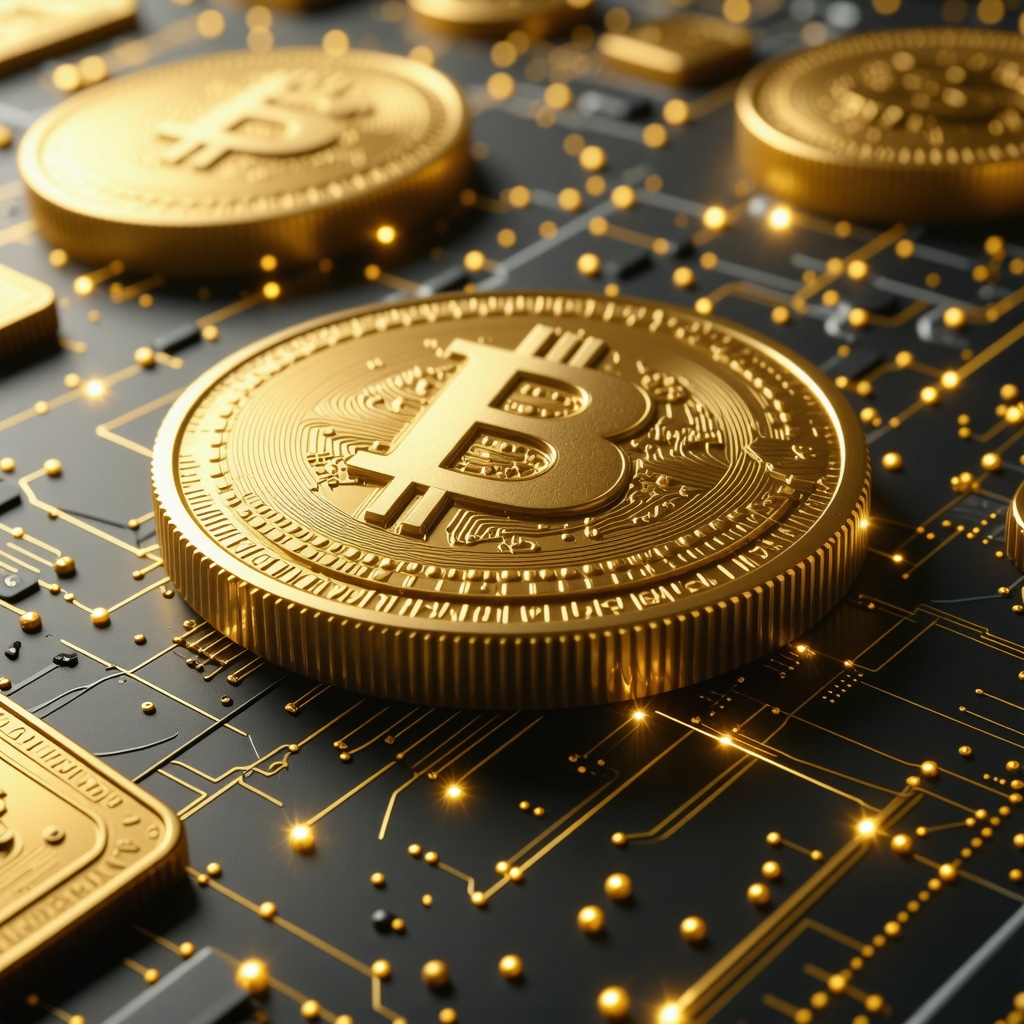
As the debate intensifies, industry insiders are exploring innovative ways to bridge digital and physical gold, such as blockchain-secured vaults and tokenized bullion. These developments could redefine how portfolios are constructed, emphasizing flexibility without sacrificing security. For example, some firms now offer blockchain-certified gold bars that can be traded seamlessly across borders, combining the best features of both worlds.
How Will ESG and Sustainability Trends Influence Gold Mining and Investment?
Environmental, Social, and Governance (ESG) considerations are increasingly shaping investor decisions and corporate strategies within the gold industry. In 2025, responsible mining practices and sustainable sourcing are likely to become prerequisites for major investment funds. The Physical Gold Investment sector is adapting rapidly, adopting eco-friendly extraction techniques and transparent supply chains to meet rising demand from ESG-conscious investors. This shift not only impacts the supply side but also influences pricing, as ethically sourced gold commands premium valuations. Experts argue that this focus on sustainability could lead to a new era of ‘green gold,’ where environmental integrity and financial returns go hand-in-hand, attracting a broader investor base.
What Strategic Moves Should Investors Consider in a Complex Geopolitical Landscape?
In a world rife with regional tensions, trade disputes, and shifting alliances, a nuanced, multi-layered investment strategy is essential. Diversification across physical gold, ETFs, and mining stocks can mitigate risks associated with geopolitical shocks. Additionally, staying informed through authoritative sources like the Gold Market Analysis 2025 helps investors anticipate market moves and adjust their holdings proactively. The key is to maintain a flexible portfolio that can adapt swiftly to geopolitical developments, technological evolutions, and macroeconomic shifts, ensuring resilience in uncertain times.
Engaging with financial advisories and industry reports remains crucial for crafting sophisticated strategies. As we navigate 2025, those who understand the intricate interplay of these factors will be best positioned to capitalize on gold’s enduring appeal. What are your thoughts on how geopolitical and technological factors will influence gold prices in 2025? Share your insights below and join the conversation on shaping your financial future.
Expert Insights & Advanced Considerations
1. Geopolitical Risks as Catalysts for Gold Prices
Senior analysts emphasize that escalating geopolitical tensions, such as regional conflicts and trade disputes, serve as persistent catalysts for increased gold demand. Their insights suggest monitoring geopolitical developments closely, as these can trigger swift market reactions and influence gold’s trajectory significantly. Diversification strategies should incorporate geopolitical risk assessments to optimize resilience in volatile scenarios.
2. Digital Assets Complementing Traditional Gold Holdings
Experts highlight the rising importance of integrating blockchain-backed digital gold tokens with physical bullion. This hybrid approach offers enhanced liquidity and security while maintaining intrinsic value. Strategic investors are advised to evaluate custodial risks and technological advancements to leverage the full potential of digital-physical gold synergy.
3. ESG and Sustainability as Market Differentiators
Leading industry voices stress that ESG considerations are transforming gold mining and sourcing. Ethically sourced, sustainable gold is commanding premium valuations, influencing supply dynamics and pricing. Staying informed about ESG standards and responsible mining practices is essential for strategic positioning in a mature market environment.
4. Central Bank Movements and Reserve Shifts
Analysts observe that central banks are increasingly diversifying reserves into gold, signaling a strategic shift toward stability and independence from fiat currencies. Tracking central bank activities provides valuable foresight into potential price movements and market confidence levels, necessitating a focus on reserve trend analysis.
5. Innovative Investment Vehicles and Market Accessibility
Industry experts recommend exploring innovative investment avenues such as blockchain-secured vaults and tokenized bullion, which democratize access and enhance transaction efficiency. These innovations are poised to redefine market participation, emphasizing the importance of technological literacy for investors seeking competitive edges.
Curated Expert Resources
- World Gold Council: Offers comprehensive data, market reports, and analysis on gold demand, supply, and investment trends, serving as an authoritative source for strategic insights.
- IMF Digital Assets Report: Provides in-depth analysis on how blockchain and digital currencies are reshaping asset allocation, crucial for understanding technological impacts on gold investments.
- Gold Market Analysis 2025: Industry-leading report detailing central bank reserve shifts, geopolitical influences, and market forecasts, essential for advanced strategic planning.
- Responsible Gold Mining Principles (RMI): Guides investors on ESG standards and sustainable sourcing, vital for aligning investments with ethical considerations.
- Blockchain and Digital Gold Innovation Journals: Scholarly articles and industry reports on emerging digital asset technologies, helping investors stay ahead of technological trends.
Final Expert Perspective
In the complex landscape of gold investment, understanding the nuanced interplay of geopolitical risks, technological innovations, and ESG factors is paramount for strategic success in 2025. The convergence of physical and digital assets, coupled with evolving reserve policies, underscores the importance of an integrated approach rooted in expert analysis and credible resources. Engaging with authoritative reports and maintaining a forward-looking mindset enables investors to navigate uncertainties and seize opportunities inherent in gold’s enduring appeal. For those committed to refining their investment strategies, continuous education and strategic diversification will remain the cornerstones of resilience and growth. We invite you to share your insights, explore our curated resources, and stay at the forefront of gold market developments to ensure your portfolio’s robustness amid an ever-changing global economy.






